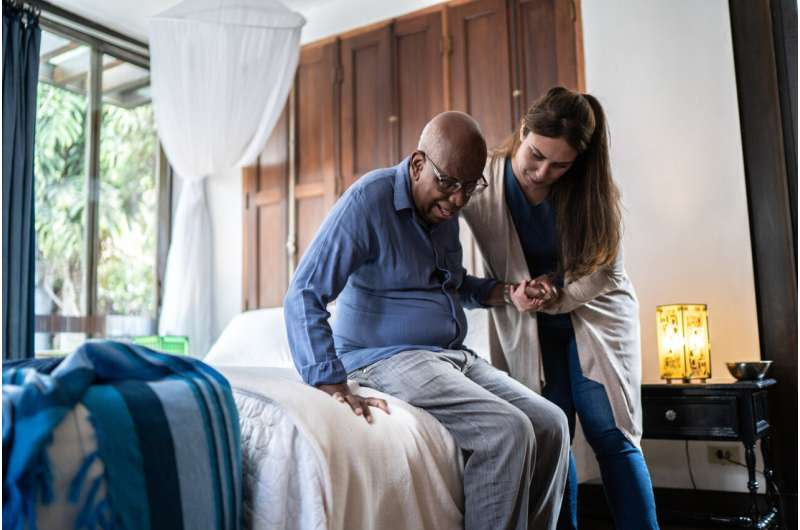by Serena Crawford, Yale University

Credit: Yale University
Older adults who survive a critical illness, such as sepsis or respiratory failure, often have symptoms that restrict activities, but little is known about how these symptoms change over time or compare with those prior to illness, and whether these changes differ among vulnerable subgroups.
In a new study, Yale researchers evaluated changes in restricting symptoms among adults aged 70 or older during the six months after a critical illness. The findings were published in the American Journal of Respiratory and Critical Care Medicine.
“With improved treatments in the ICU, not many older adults who are admitted with critical illness die anymore, but these individuals survive in a state of health that is not what it was before their illness,” said Snigdha Jain, MD, MHS, assistant professor of medicine (pulmonary, critical care and sleep medicine), and lead author of the study. “For example, older adults may have increased disability or develop memory problems or mental health issues.”
Symptoms are complaints that people have regarding their health that tell clinicians that there may be something wrong—they are our first pointers toward disease, Jain explains.
“Sometimes symptoms can cause people to substantially cut back on common activities like bathing, eating, or walking,” Jain said. “These symptoms—which we labeled restricting symptoms—can impact long-term health.” Examples of restricting symptoms assessed in the study include chest pain, shortness of breath, fatigue, joint pain, and urinary problems.
In the study, researchers found a more than three-fold increase in the number and prevalence of restricting symptoms among older adults during the first few months after a critical illness. The symptoms declined, returning to baseline three months after hospital discharge. The research team noted that restricting symptoms did not differ significantly by sex, multimorbidity, or individual- or neighborhood-level socioeconomic disadvantage.
The study highlighted that the early period after a critical illness—especially the first month—is potentially a pivotal time for all older adult patients, Jain said.
“If a patient doesn’t see us until three months after discharge from the ICU, we may have missed the window during which the patient’s activity was restricted,” Jain said. “Intervention during that time could enhance recovery of function after critical illness, potentially decreasing hospital readmissions and other adverse consequences of disability for older adults.”
Jain hopes that the study will prompt clinicians to proactively manage these symptoms through medication, exercise, or other approaches that help patients stay active post-ICU.
“Acting on the restricting symptom itself is just as important as figuring out why that symptom is happening,” Jain said. “We have the opportunity to not only improve these patients’ quality of life but also change their health trajectory.”
More information: Snigdha Jain et al, Changes in Restricting Symptoms after Critical Illness among Community-Living Older Adults, American Journal of Respiratory and Critical Care Medicine (2023). DOI: 10.1164/rccm.202304-0693OC
Journal information: American Journal of Respiratory and Critical Care Medicine
Provided by Yale University

Leave a Reply